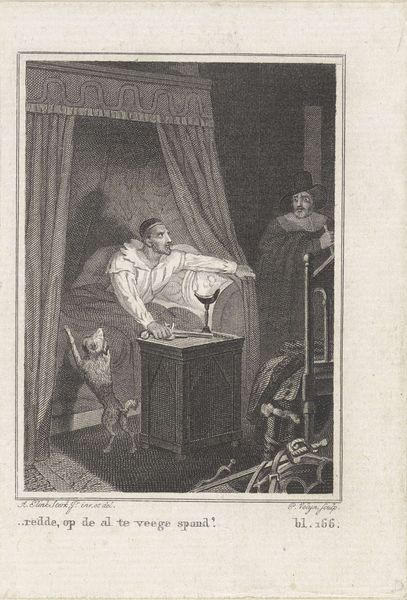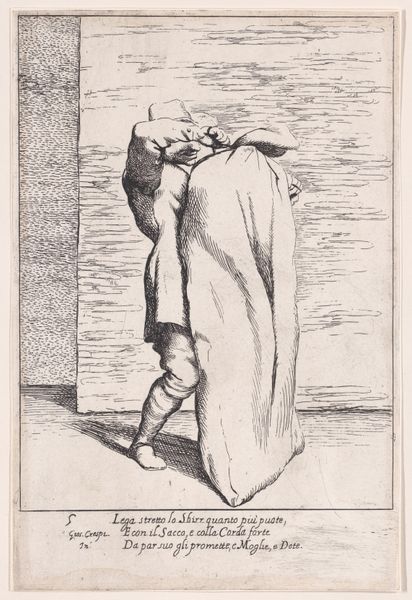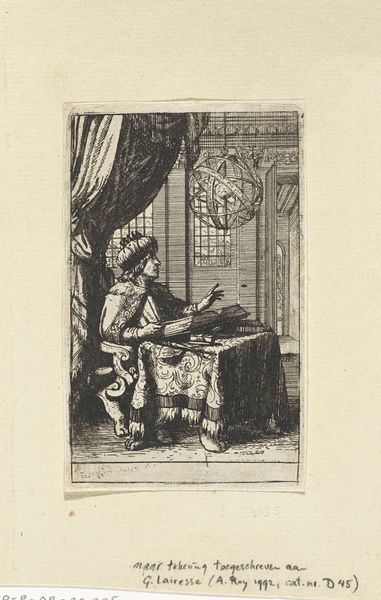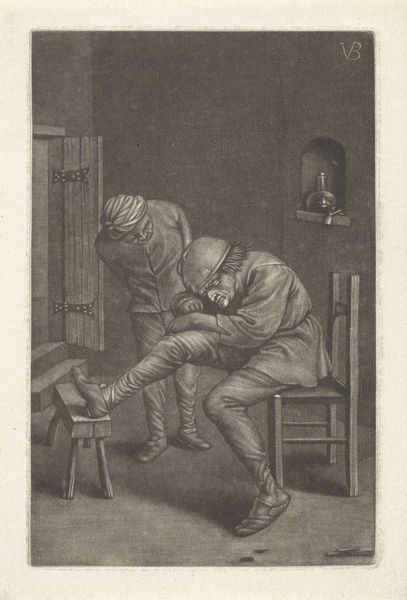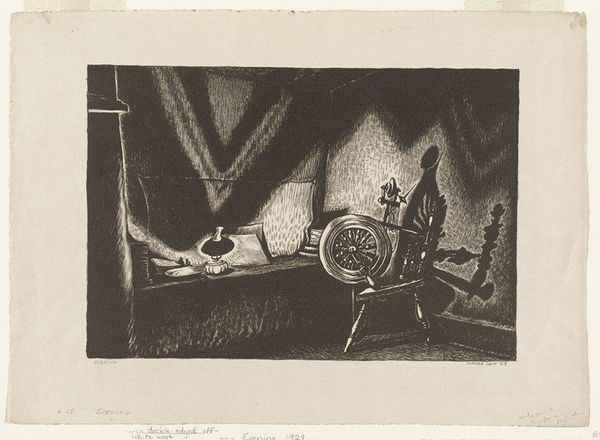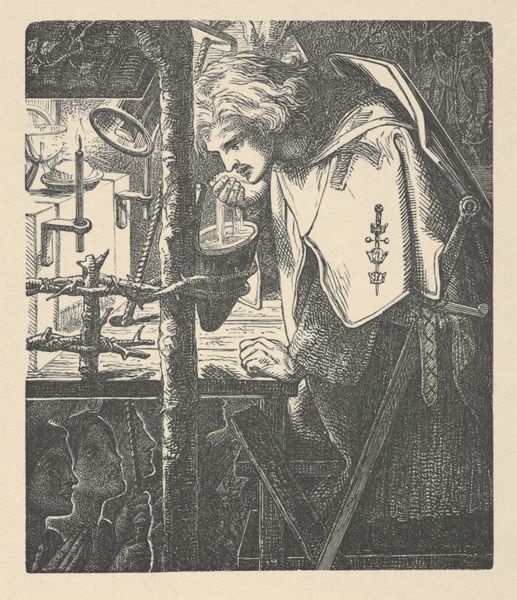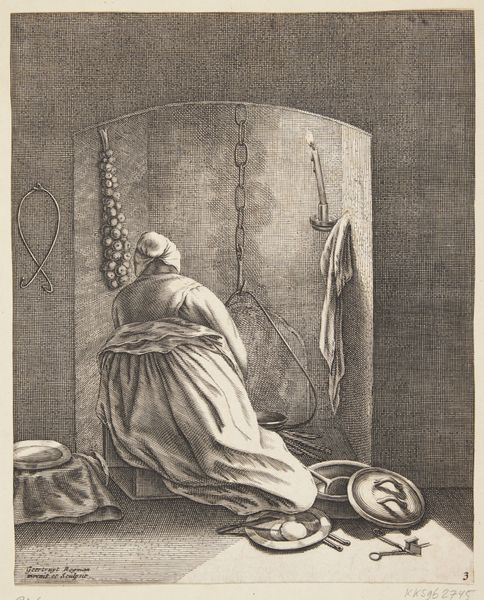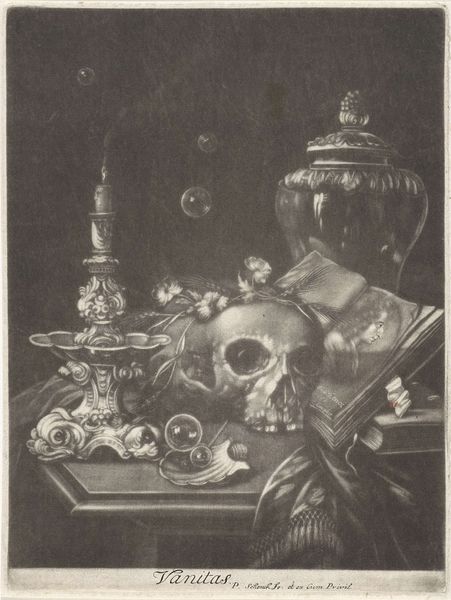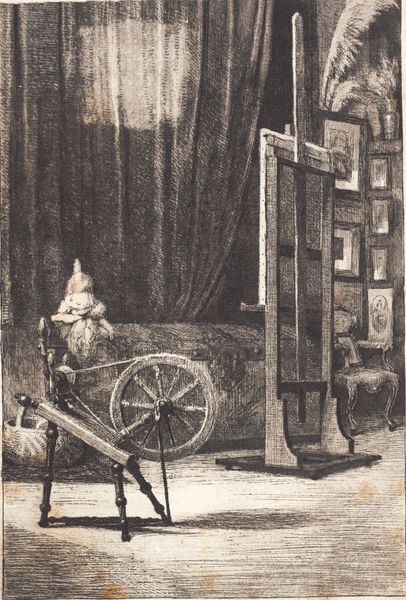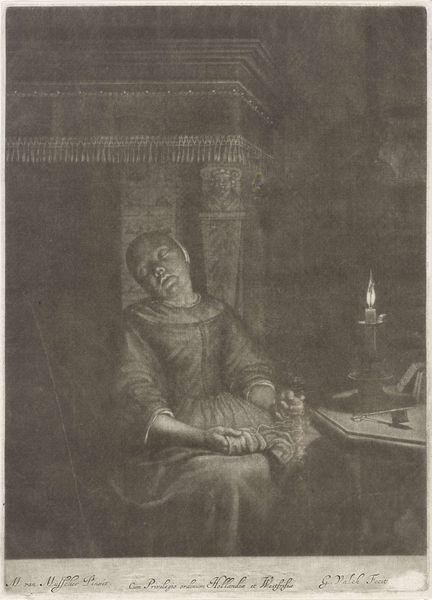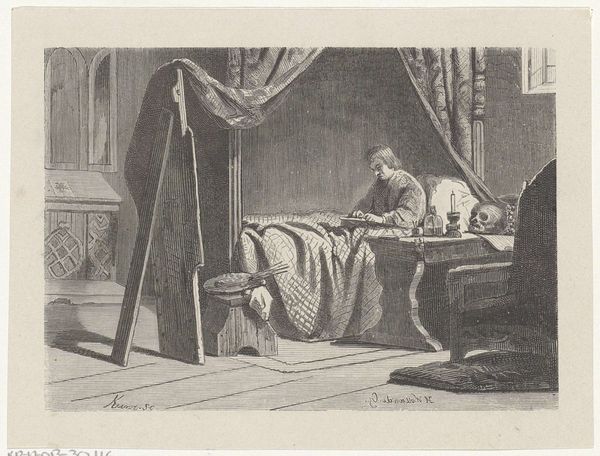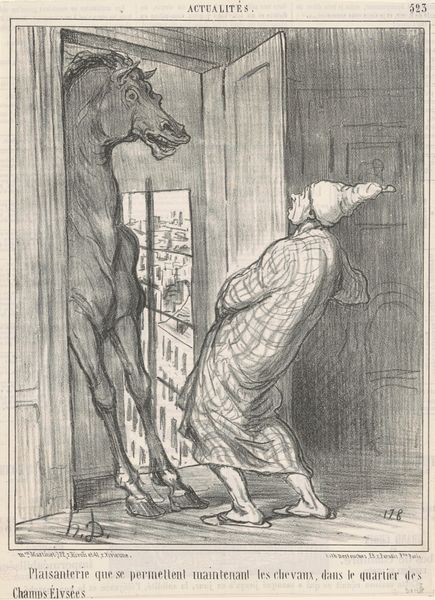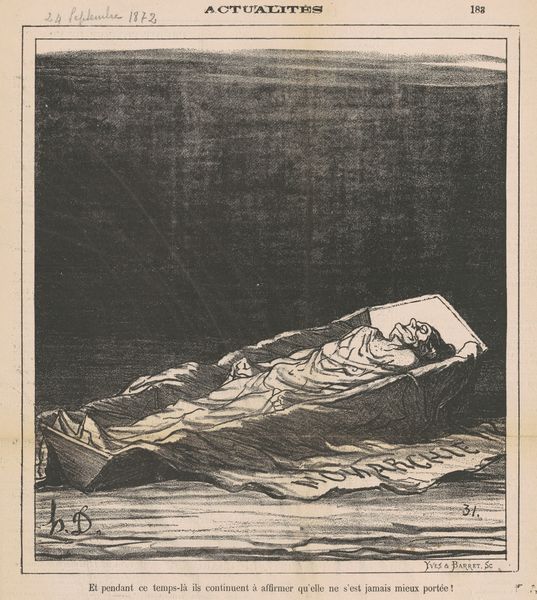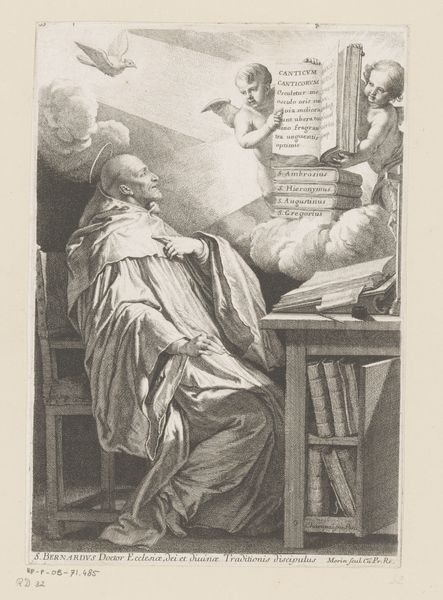
engraving
#
portrait
#
baroque
#
old engraving style
#
vanitas
#
engraving
Dimensions: height 507 mm, width 401 mm
Copyright: Rijks Museum: Open Domain
Curator: We're looking at "Jacobus Tyras, opgebaard op een bed van stro" an engraving from 1638 by Pieter Nolpe, housed in the Rijksmuseum. The work depicts a friar lying in state. Editor: Stark, wouldn’t you say? The strong diagonal of the body across the rectangle of the print, combined with the muted tonality, really hits you with a sense of finality. It's interesting to note, too, that the material of the body and habit create a tonal echo with the ground on which the friar lays. Curator: Definitely. And the scene is rich with Vanitas symbols, meditations on mortality. We see a skull, an extinguished candle, these all speak to the fleeting nature of life. Note how the friar clutches a crucifix, reinforcing a focus on salvation in the face of death. It creates a layered cultural meaning when we realize the engraving served as a memorial print. Editor: I'm intrigued by the use of light. It seems to pour in from an unseen source, highlighting the friar's face while leaving the background and the Vanitas still life somewhat obscured. That contrast draws your eye to him, making the scene very contemplative. The fine hatch marks add texture to everything, so unlike what it shows, this print doesn't seem still. Curator: Yes, and his open eyes, though lifeless, suggest a soul departing or perhaps a visionary moment. The choice of straw as his deathbed is also striking—humble and austere, underscoring a life dedicated to poverty and spiritual devotion, but also pointing toward the physical decay which even devotion can't impede. Editor: Absolutely. I had almost missed the words at the very bottom. Considering all these aesthetic choices together, and factoring the subject matter, the artist very skillfully uses graphic language. It adds up to create a quiet, reverent, solemn, almost mournful piece. Curator: I agree. Examining Nolpe's choices through the lens of iconography and symbolism adds profound meaning to the experience of viewing it. Editor: And, analyzing form gives us a deeper understanding of the intent. Thank you.
Comments
No comments
Be the first to comment and join the conversation on the ultimate creative platform.
